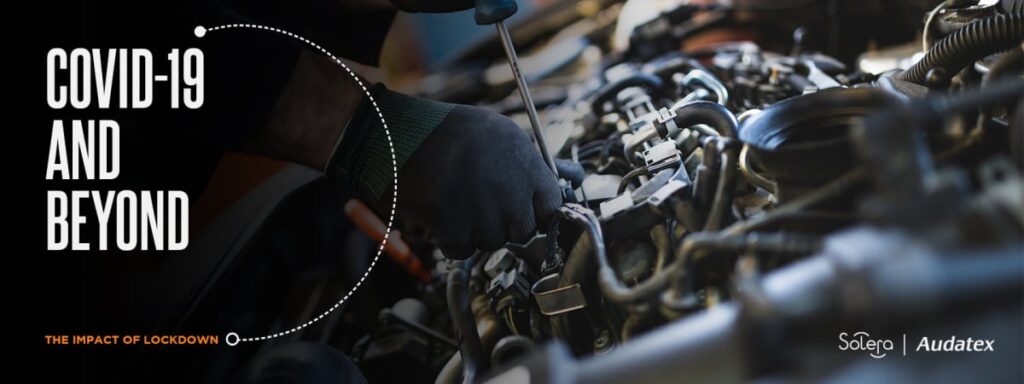HOW ARE REPAIR SITES LOGGING CLAIMS DURING THE COVID-19 LOCKDOWN?

For many vehicle repair sites globally, operations have either ground to a halt or reduced significantly during the ongoing Coronavirus crisis. In the UK alone, almost half of repair sites temporarily closed their doors during the lockdown period. For those that remained open, the effects of reduced work volumes, a compressed workforce and requirements of maintaining social distancing in the shops and with customers, inevitably caused productivity rates to slow.
Despite the decline in repair activity as sites aligned with the necessary physical distancing requirements, damage claims continue to be processed by policyholders. As a result, the shift in output has inevitably created some changes to the way claims are being handled by repair sites during this period. Here at Solera Audatex, our experts in the UK have explored unique data to understand the approach that repairers are taking at this time, revealing some interesting behavioural nuances around how claims are being handled by repairers and the resulting rates of assessment. Let’s take a closer look at the findings.
Rate of instructions versus calculations
The first point of comparison can be drawn between the ratio of claims taken at FNOL by the insurer and the number of estimated calculations received from the repairer on this specific electronic instruction.
Since the beginning of March, we have begun to see a gap appear between the numbers of instructions sent and calculations being performed. What this tells us is that even though overall claims volume being sent has dropped, as vehicle usage declines, we are seeing less assessments being done on these jobs. By week 10 of 2020, we had already seen just under 1,000 jobs that had been logged but had not yet undergone an assessment.
This trend continues in the following weeks and appears to flatline and become the new normal by week 14, when the UK went into lock-down. If we take week 14 as an example, out of the 143 new instructions to bodyshops that would normally be calculated in the same week, just 56 of these had an assessment completed. This produces a 24% conversion on repairs that are likely being worked on by the repairer in the bodyshop. Leaving 87 jobs in one week that have been logged but repairers have not carried out an assessment – a significant backlog that can be explained in a number of ways.
Cause and effect
The first and arguably most obvious being that bodyshops simply do not have access to the vehicle to evaluate the damage and method of repair. As we know, many bodyshops have suspended trading and are unable to safely get to the vehicle and perform damage assessments.
As we adhere to social distancing practices, we can also assume that if a customer’s car has minimal or cosmetic damage and is still driveable, they would prefer not to physically take it to the bodyshop for repair. Once we emerge into the recovery phase, we can assume that many repairers have continued taking driveable claims from Insurers during this period to build up a backlog of work that they can action when they eventually reopen their doors.
Bodyshops themselves are also staggering their bookings due to Covid-19 distancing requirements, which restricts the number of staff able to work safely on the shop floor and reduced workforces as a result. Shops in the future may need to extend operational hours and stagger shifts to operate at pre-COVID capacity, whilst adhering to social distancing guidelines.
Although the data set we’ve explored in this blog is specific to the UK market, these overarching challenges are also true of many other markets globally. Therefore, it is fair to say that the trend of logging claims now for repair in the future is not exclusive to the UK, but representative of repairer behaviours around the world.
Looking ahead to a period of slow release from lockdown and therefore a prolonged recovery for the vehicle repair sector, we will be paying close attention to the shift in dynamic as repairers have to adapt to operate and clear the claims backlog that has inevitably been created, whilst safely managing their workforce and adhering to new procedures that will form our new sense of normal.